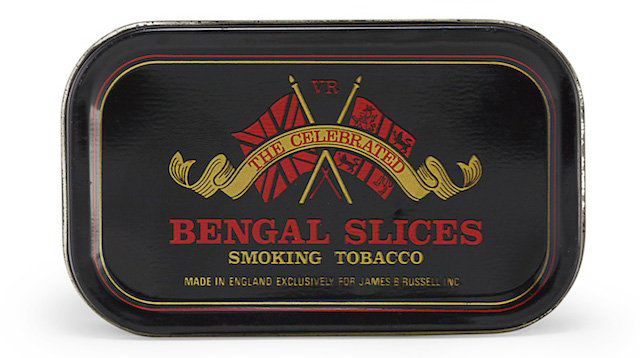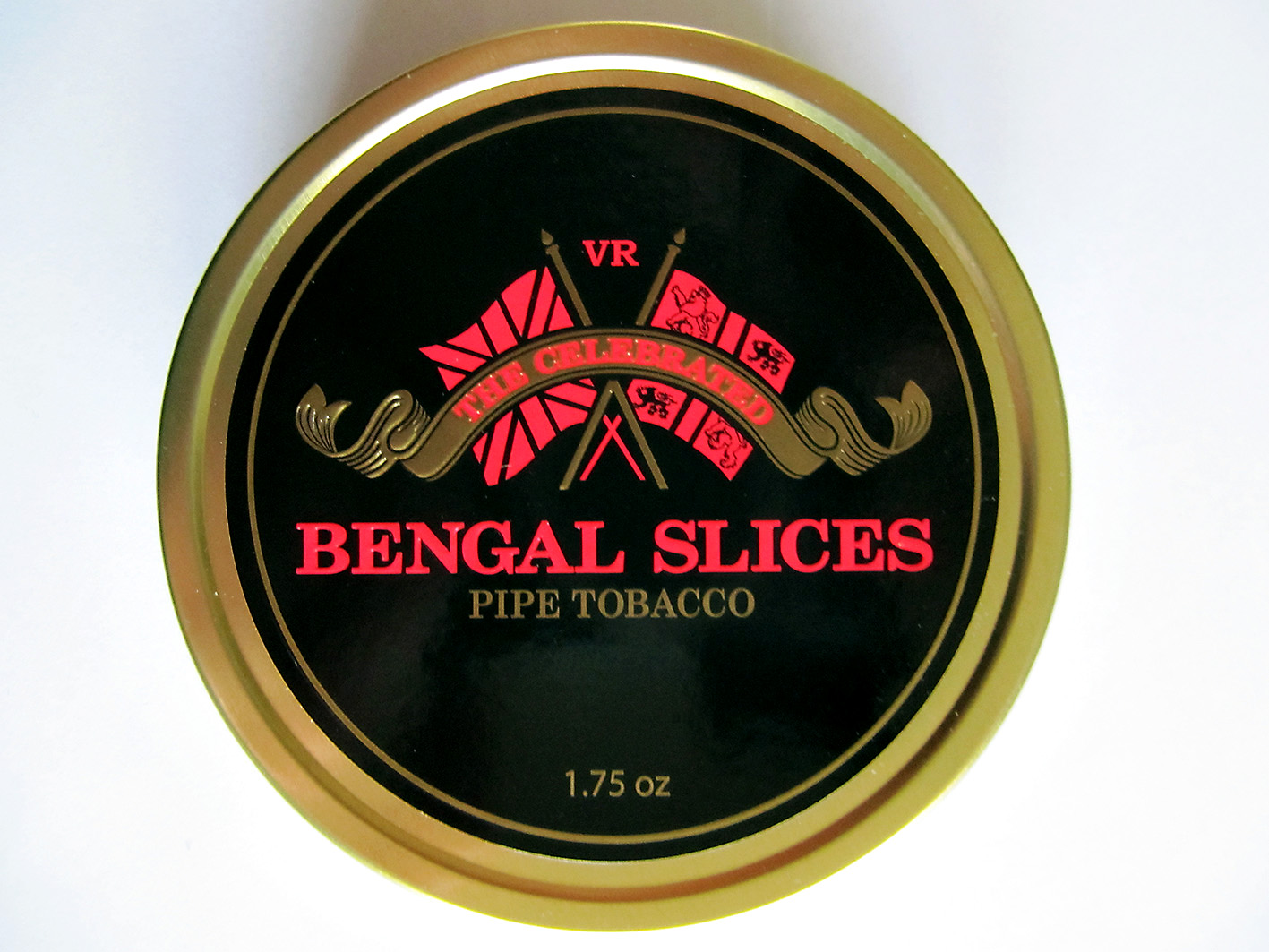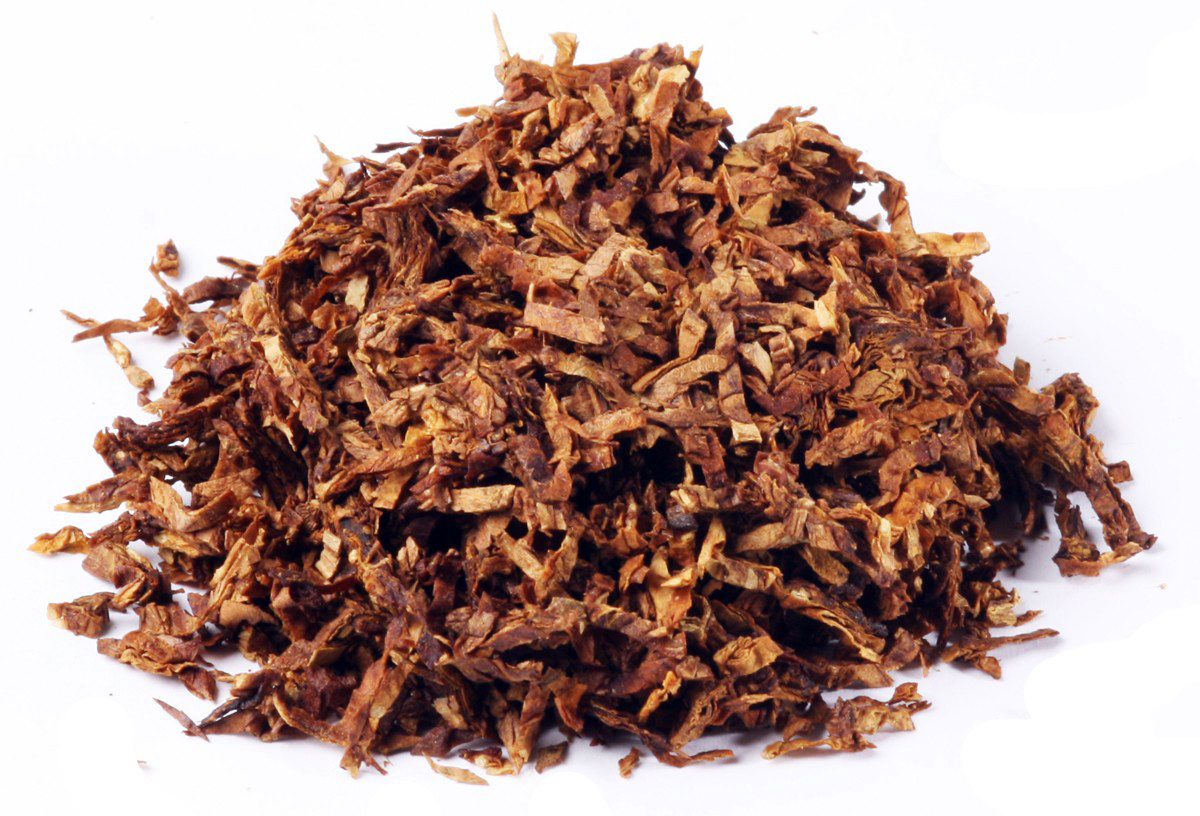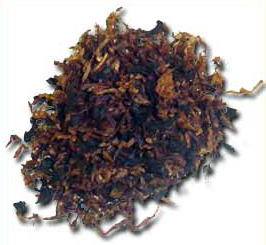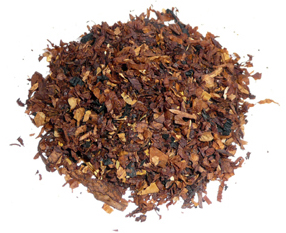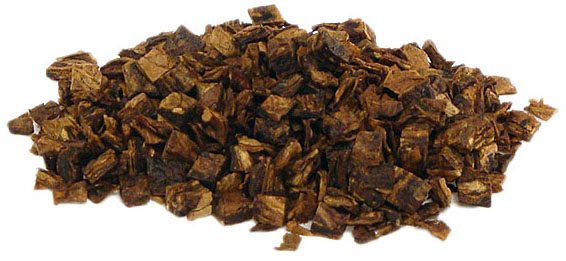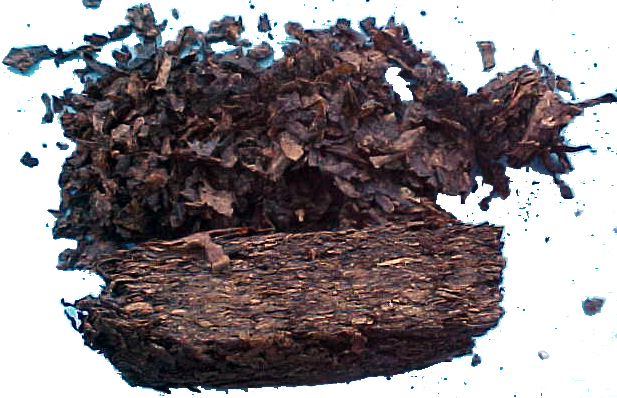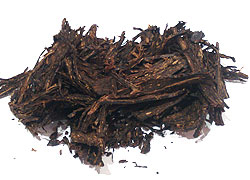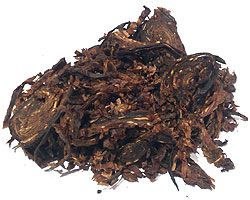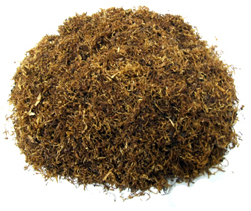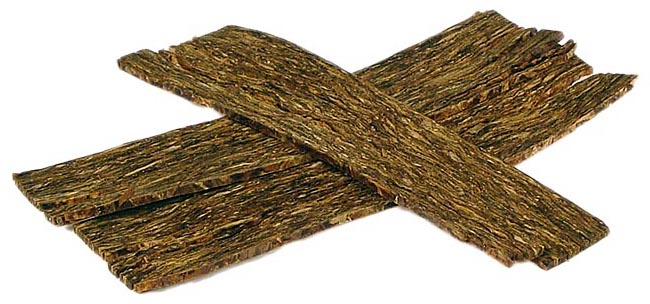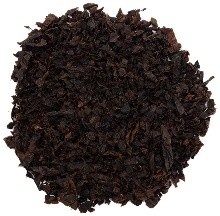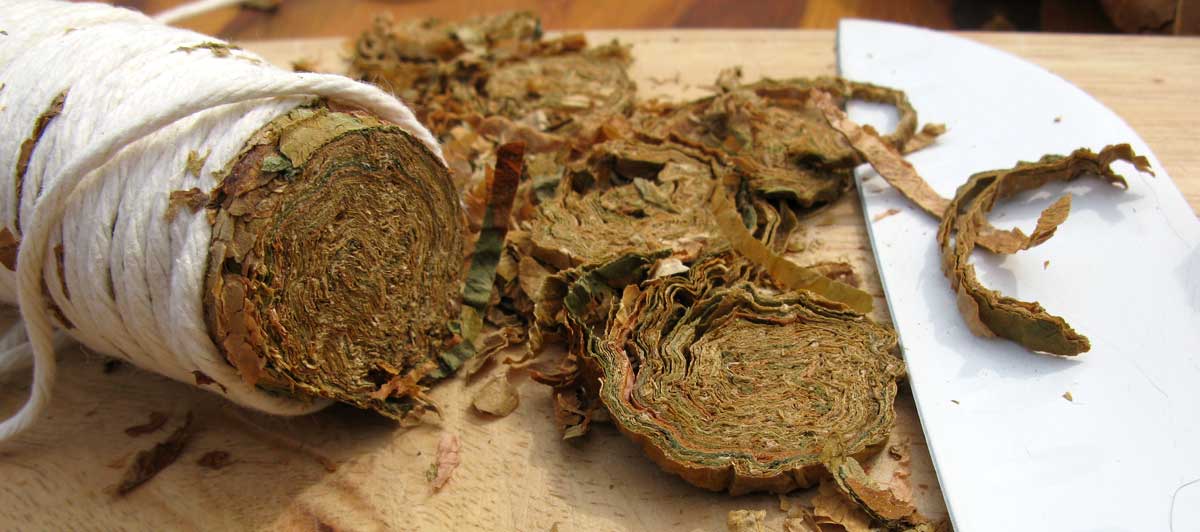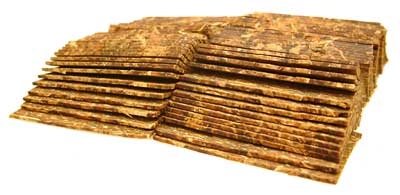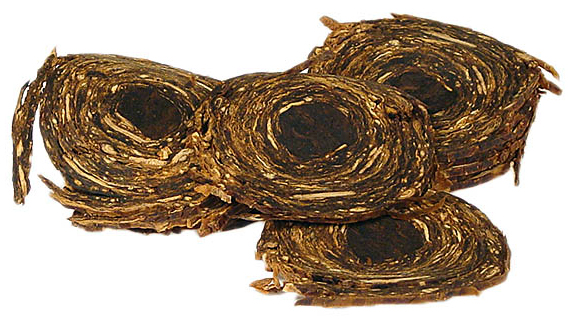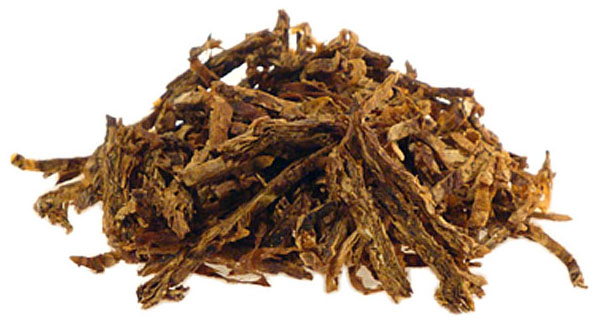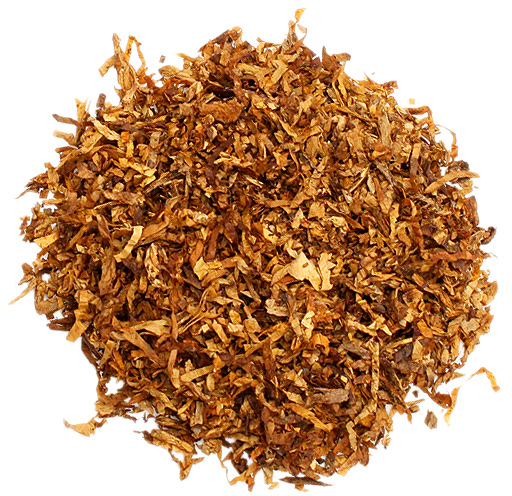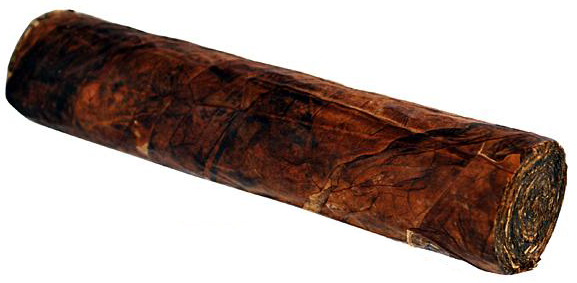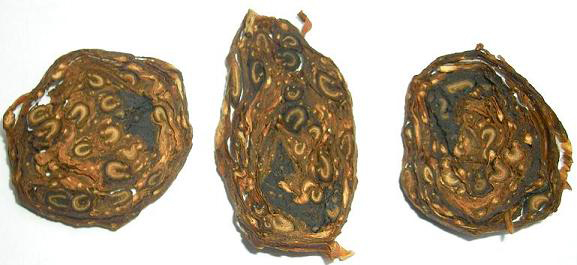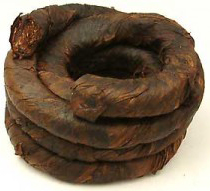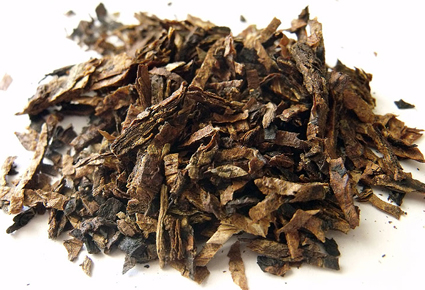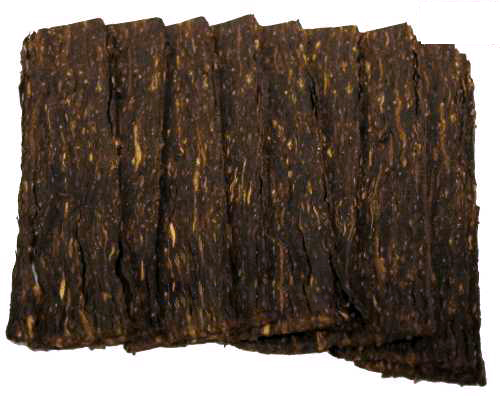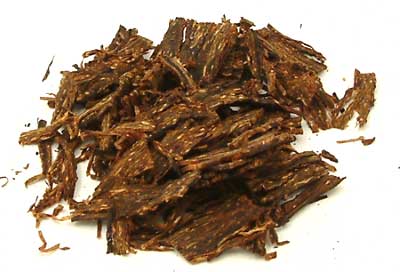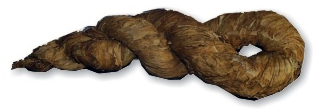Sometimes I think I was a pipe-smoker in a former life. You know, that sometimes you look at an old tobacco tin and you could swear you have seen it before, that it just speaks to you. That happened to me in my early pipe-smoking days when I browsed through the site of GL Pease and stumbled upon an article about The Celebrated Bengal Slices. I saw a dreamy picture of a classy, black rectangular tin with red letters and flags and even without looking at the text I thought: Woww.. That tobacco must be amazing! Of course, after reading the article I was disappointed because the blend was no longer made. Luckily, after some searching on e-bay I found a still sealed tin for a good price. I immediately bought it and when the postman delivered the package it did not take long for me to crack open the tin, fill up a pipe and smoke it. To be honest I was slightly disappointed, it tasted a bit flat and dull. Maybe my expectations were too high. Besides I saw that the tin was not made by the House of Sobranie but by Danish company A&C Petersen. Bummer.. I stashed away the tin (had never heard of mason jars back then) until some weeks ago when I was able to buy the latest incarnation of The Celebrated Bengal Slices. Of course I had to compare the both. But first some history.
It all started in the early 1950’s when the founder of Smokers’ Haven, Joseph Zieve, came up with an idea for a new, revolutionary tobacco. He was thinking of a full English blend that was cut, pressed and then cut into slices. That way, you could easily rub it out with only one hand and fill your pipe. It also had to be so compressed that you could carry a weeks supply on you without a big bulge in your pocket. Smokers’ Haven Krumble Kake was born as a blend and as a style (cut) of tobacco with the help of the legendary house of Sobranie which produced it. A couple decades later, in 1977 to be precise, when Krumble Kake was a huge success in the USA the Sobranie house decided to bring their own version on the market. They replicated Krumble Kake but made it unique by the addition of a special topping. It even was whispered that the new blend, called The Celebrated Bengal Slices, was the pressed and sliced version of the fabled Balkan Sobranie Smoking Mixture. But despite that the blend became only moderately popular. It was always eclipsed by the real stars of the Sobranie house: the better known and more widely available Balkan Sobranie mixtures.
In 1980 Gallaher took over the Sobranie trademarks. The Krumble Kake recipe and all of the equipment to make it was transferred over to J. F. Germain & Son who produced it for Smokers’ Haven. The production of Bengal Slices was transferred to the Manchester Tobacco Company (MTC) but was almost directly discontinued. However, the blend made a first comeback! Apparently Bengal Slices actually was a house blend prepared by the House of Sobranie for its jointly owned subsidiary James B. Russell Inc. (a well known tobacco importer / distributor). As such it was not a part of the 1980 transaction with Gallaher. James B. Russell Inc. owned the Bengal Slices trademark and retained control of the brand (I thank Jon Guss for this information). So in 1991 Danish company A&C Petersen began producing the blend for James B. Russell Inc. It maintained something of a cult following but it was too different from the original to really make an impact on sales. In 1999, possibly due to the impending acquisition of A&C Petersen by Orlik/Scandinavian Tobacco Group in 2000, The Celebrated Bengal Slices was discontinued, never to be seen again…
…Until 10 July 2015 when a message appeared on several pipe forums: “We are pleased to announce that the Board of Directors of The Standard Tobacco Company of Pennsylvania, today at 9:30 am executed the instrument conveying to Meier & Dutch the right to manufacture and distribute, under Standard Tobacco’s trademarks, War Horse, John Cotton’s blends, and Bengal Slices.” 3 friends with a passion for pipe-smoking, Dan, Simon, and Roger started the Standard Tobacco Company after a long evening of too much sake and sushi in the autumn of 2014. They talked about resurrecting long-dead trademarks of revered British blends. At first with a laugh and not really serious but later they began to ponder. What if… So with help of other friends they acquired the abandoned trademarks, unearthed lost recipes, investigated and chemically analysed vintage tins and interviewed people whose memories held the secrets of the old tobaccos. At a pipe-club meeting Dan asked master-blender Russ Ouellette if he was willing to help make the blends, and he was. Before Russ had created a tribute to Bengal Slices, Fusilier’s Ration, released in 2012. The Standard Tobacco project provided such a wealth of new research that it confirmed that his tribute blend was surprisingly accurate. With only some subtle refinements and improvements the new Celebrated Bengal Slices was ready to hit the shelves.
 Package/tin:
Package/tin:
A&C Petersen Bengal Slices: Here the same rectangular tin is used as the old Sobranie made Bengal Slices. Only difference is that the tin itself is not black and on the label is says “Made in Denmark exclusively for James B Russell Inc.” instead of “Made in England exclusively for James B Russell Inc.”. I just love the artwork, being a Desktop Publisher I can really appreciate it. Because of the simple use of black, gold and red in the letters and flags the tin has a downright classy look. There is no further description on the tin.
Standard tobacco Bengal Slices: A round European style tin is used. A bit of a let down for me because for me the rectangular tin just has a more nostalgic feel. But they made up for that with the exquisite faithfully reproduced label. Amazing job well done! Because of the relief printing the images and texts pop out of the black background even more. On the backside is a sticker with amongst other things this description: Bengal Slices is a crumble cake made of Cyprian Latakia, outstanding Orientals, Bright Virginia and a touch of Black Cavendish, finished with a subtle top note.
 Contents/Ingredients/cut:
Contents/Ingredients/cut:
A&C Petersen Bengal Slices: Upon opening the tin you see a gold paper in which the neatly stacked slices are wrapped. It looks organized, a feast for the eye, feels like you are unwrapping a box of delicious bonbons. The slices themselves are almost black with few colours protruding. I am not sure about the ingredients but I believe they are dark Virginias, black cavendish and quite a lot of Cyprian latakia. If there are orientals in the blend (which I doubt) it surely is not much. The cut is a classic crumble cake like Krumble Kake and Penzance.
Standard tobacco Bengal Slices: I was a bit disappointed when I opened the tin. A standard white wrapping paper with a round black insert upon loose random sized slices of presses tobacco. It just looked a bit messy compared to the neatly stacked contents of the A&C Petersen tin. The slices are more colourful and thicker than the old version. A joy to look at if only they were a bit more uniform. The ingredients are bright toasted Virginias, orientals, a bit of black cavendish and Cyprian latakia. The cut is a crumble cake like Seattle Pipe Club’s Mississippi River.
 Smell from the tin:
Smell from the tin:
A&C Petersen Bengal Slices: A dark, earthy, musty, leathery smell rises from the tin and that is pretty much it. I had to rehydrate the slices with the moist-towel-over-a-bowl technique so perhaps a part of the original topping was lost.
Standard tobacco Bengal Slices: This tobacco surely has a unique trademark smell. Aside from the leathery, woodsy latakia I detect a topping which, according to my nose, contains liquorice, chocolate, anise and a hint of vanilla. I can’t really compare it to any other blend I sniffed at. Only perhaps HU tobacco’s (excellent) RaiKo ChocoLat comes a bit close.
 Taste:
Taste:
A&C Petersen Bengal Slices: When I lit the first pipe after the rehydration I almost thought the towel I used contained traces of soap. I got a faint floral / Lakeland note! Yuck! Yeahyeah, I am not a fan of Lakeland tobaccos ok? Later, when I re-read the GL pease article, I saw that the old Sobranie made Bengal Slices had such a floral taste so I guess that in that retrospect the Danish version was spot on. Once I overcame the soapy note I started to enjoy the tobacco a bit. A well balanced, dark, creamy and smooth blend wit not much going on. But in the second half of the bowl I began to lose interest. The basis taste stayed the same and I found the tobacco becoming monotonous. Damn, I really missed some oriental firework. With some effort I forced myself to fully smoke the pipe. Purely to determine if my first impression was right I smoked several bowls more, each time I came to the same conclusion: not my cup of tea.
Standard tobacco Bengal Slices: I first smoked this Bengal Slices version in the car while driving back home late in the evening. It was almost magical. The roads were quiet, the moon was high and bright, the music in the car slow and moody and I had one of my best first impressions of a tobacco ever. Upon lighting the bowl there immediately was thick, fat and creamy smoke coming off the pipe. The soft latakia in combination with the topping had an incense like quality, it tasted superb. Going further through the bowl I noticed that this was not a roller-coaster blend with different tastes at each puff, the flavour profile did not change much. You just got some leather and wood from the latakia, some sweet from the Virginias and black cavendish and some sour and spice from the orientals. All working in perfect harmony. After smoking more bowls I also detected a BBQ flavour sometimes weaving through the smoke (especially in the last part) and hints of white chocolate. In my opinion the strong point of the new Bengal Slices is the exquisite balance and great basic trademark flavour.
 Miscellaneous:
Miscellaneous:
A&C Petersen Bengal Slices: When I finally had dehydrated the slices they were fine to handle. Crumbling was easy, smoking also. Oh, this also goes for the Standard Tobacco slices, do not tamp the tobacco too hard when smoking. Otherwise you get a big chunk of ash on the bottom which clogs up the pipe. Nicotine level medium and no tongue bite.
Standard tobacco Bengal Slices: The tobacco was at first a bit on the dry side for me. Or I am just used to smoking wet.. Anyway, I could not help rehydrating the slices a little bit. Crumbling the blend is easy and that also goes for smoking it. In my opinion this one smokes a bit better than the old version. Nicotine level medium and only in a few pipes I had a tiny bit of tongue bite.
 Room-note:
Room-note:
A&C Petersen Bengal Slices: Ellen was mostly already at sleep when I smoked this one, but my nose said mwoah… Not too bad for a latakia blend.
Standard tobacco Bengal Slices: Here the Ellen-meter says: mwoah. She does not really like it (it contains latakia, duh!) but the smell is bearable.
 Price:
Price:
A&C Petersen Bengal Slices: I bought the tin on e-bay 2 June 2011 and paid $26 (± €23) for it. Pretty good huh?
Standard tobacco Bengal Slices: At 4noggins you pay $12.79 (± €11,70) for a 1.75 oz. tin.
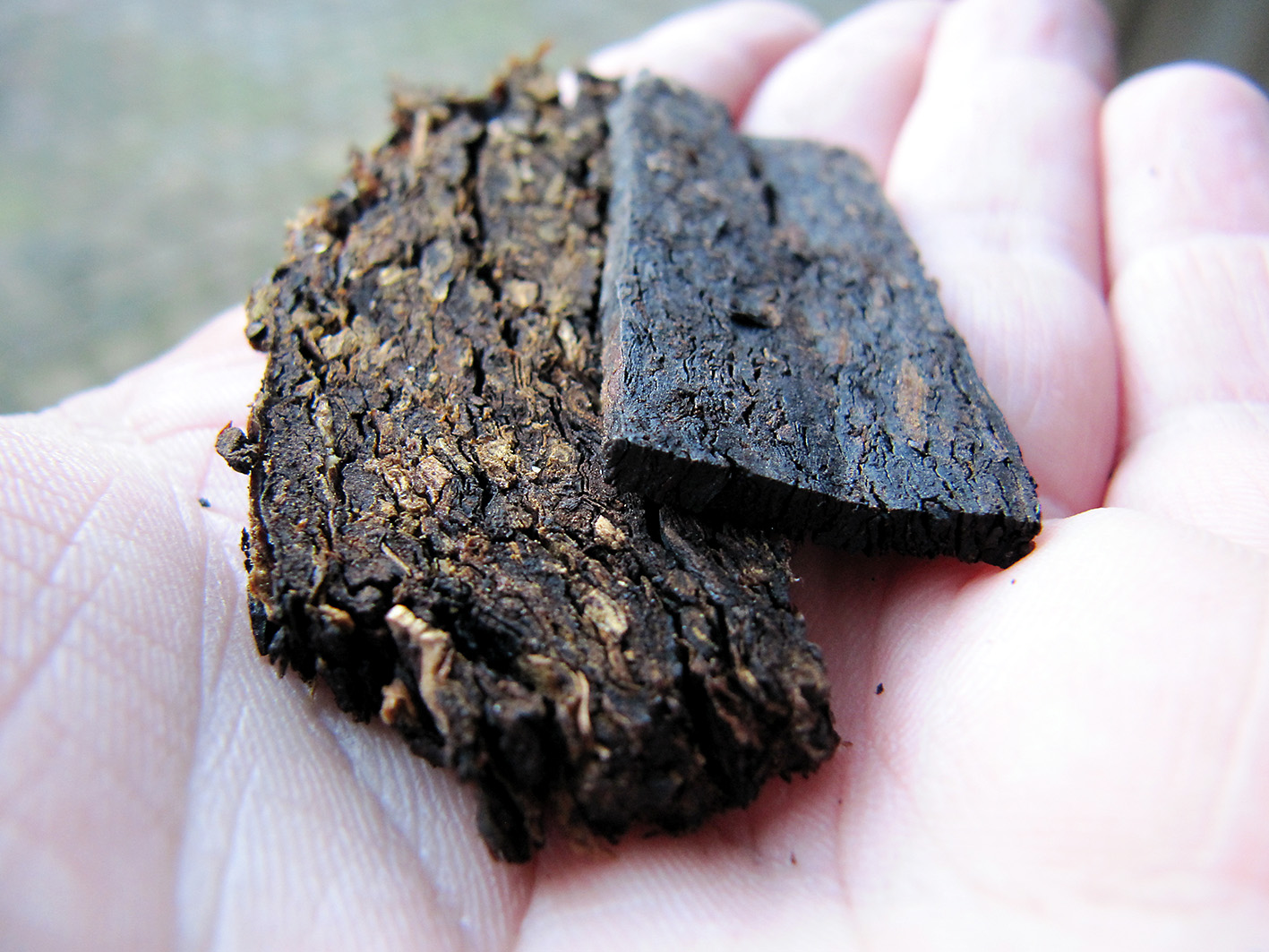 Conclusion:
Conclusion:
A&C Petersen Bengal Slices: To be honest I am glad I don’t have to smoke this one any more. I don’t like the floral note, I don’t like the monotonous taste. like I said before, not my thing.
Standard tobacco Bengal Slices: I love this new incarnation of The Celebrated Bengal Slices. I smoked a lot of bowls of it and each time I was looking forward to the experience. My only comment is the shape of the tin, I rather see the beautifully elegant rectangular tin and the rough uneven slices. People at Lane Ltd. (manufacturer of the blend), can you please make neat slices of similar size and put them in a rectangular tin? The eye also wants something, let’s say it adds to the smoking experience. And that experience is already superb considering the young age of my tin. I can see the blend age very well so I definitely will stock up on this one. Standard Tobacco Company of Pennsylvania, thank you!


